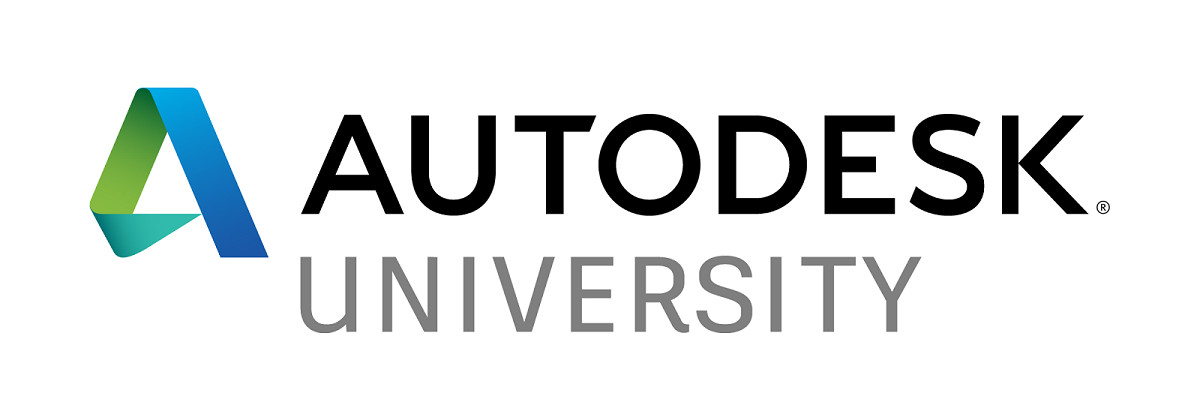

Abstract:
Do you need to create renderings of your architectural projects? Learn
how to convert 3D drawings into finished, professional-looking
renderings using the tools already built into AutoCAD. In this class,
you'll learn all about AutoCAD Lighting, Materials, Textures, and
Rendering commands. We'll take several typical architectural models and
create finished photo-realistic images.
Get the PowerPoint presentation
3304KB PDF
Get the course handout
1251KB PDF
return to top
Abstract:
Do you need to create renderings of your architectural projects? This
class continues our discussion of converting 3D architectural drawings
into finished, professional-looking renderings using the tools already
built into AutoCAD. In this class, you'll learn how to place Cameras and
create views, render to the screen, save renderings to a file, and
redisplay rendered images. We'll also learn how to create animations
using the AutoCAD Walkthrough and Flythrough tools.
Get the PowerPoint presentation
2018KB PDF
Get the course handout
1002KB PDF
return to top
Abstract:
Are you ready to take the next step and use building information
modeling to share data across the entire design team? As more people
adopt BIM, the need for sharing data and information across disciplines
has become increasingly critical. In this class, we will look at how the
Revit platform facilitates collaboration and coordination among
architects and engineers. We'll examine how to link project files
between Revit Architecture, Revit Structure, and Revit MEP, coordinate
work between disciplines, identify and correct interferences, and use
Revit's revision tracking to keep track of changes.
Get the PowerPoint presentation
1718KB PDF
Get the course handout
828KB PDF
return to top
Abstract:
Do you find it confusing that you draw everything full-size in AutoCAD,
but when it comes to text and annotations, you've got to think about the
scale at which the drawing will eventually be plotted? Well, no more.
The Annotation Scaling functionality in AutoCAD lets you create text,
dimensions, hatch patterns, and other annotation objects that
automatically change their size and placement to match the scale of the
viewport. In other words, annotation scale is now automated. See how
easy it is to apply annotation properties to text, dimensions, leaders,
tolerances, blocks, attributes, and hatches. In this class you will
learn everything you need to know to create annotation styles and apply
annotation scales to layout viewports and model space. The annotation
scaling tools can save you hours of time previously spent calculating
scale factors, and creating, editing, and managing drawing annotations
at multiple scales.
Get the PowerPoint presentation
1756KB PDF
Get the course handout
1409KB PDF
return to top
Abstract:
Do you need to create room finish schedules, parts lists, and bills of
materials? For years, AutoCAD users have been creating tables for use as
parts lists, bills of materials, schedules, and so on, by either
laboriously creating them manually or extracting attribute data to an
external file and then importing it back into AutoCAD. But this is no
longer necessary. Learn how to use new tools in AutoCAD to extract
attribute data directly to an AutoCAD table, and update those tables
automatically when changes occur. You'll also learn how to perform
calculations on table data directly within AutoCAD and how to link
AutoCAD and Excel data into a single table that can be updated
automatically. Now you can create accurate, easy-to-update data, saving
you time and money.
Get the PowerPoint presentation
2738KB PDF
Get the course handout
2868KB PDF
return to top
Abstract:
Do you need to exchange drawings and collaborate with others who don't
use Autodesk products like AutoCAD, Inventor, or Revit? Learn how to
publish AutoCAD drawings as DWF files and then collaborate using
Autodesk Design Review. This class covers creating DWF files, using
Autodesk Design Review to view, measure and mark up those DWF files, and
then use AutoCAD's Markup Set Manager to view and respond to those
markups in a seamless collaboration process. This class will also
illustrate how this same process works with other Autodesk products such
as Revit and Inventor.
Get the PowerPoint presentation
1870KB PDF
Get the course handout
963KB PDF
return to top
Abstract:
Collaboration between project teams can be overwhelming. Building
project teams consist of architects, engineers, consultants, owners, and
contractors. How do they all work together? This session looks at data
exchange between members of the design/construction team. We'll
investigate how team members can collaborate using the entire family of
Revit Software—Architecture, Structure, and MEP—as well as using other
Autodesk and third-party software tools.
Get the PowerPoint presentation
2680KB
Get the course handout
2363KB
return to top
Abstract:
If you want a highly practical introduction to web publishing that will
focus on AutoCAD-based content, this class is for you. Learn all about
the tools available to you for web-enabling AutoCAD drawings. You'll see
how to add and manage hyperlinks in AutoCAD drawings, save drawings as
design web format (DWF) files, create i-drop content, and incorporate it
all into custom-designed web pages. This class includes actual HTML
coding and practical real-world examples.
Get the PowerPoint presentation
753KB
Get the course handout
312KB
Download other course materials
(ZIP file containing DWG and DWF files, XML, HTML code, etc.)
549KB
Sample web page
containing examples used in class
return to top
Functional Wall Fundamentals
(BD31-5) – originally presented at Autodesk University 2006
Abstract:
It's time to move beyond the basics of two lines and create real walls.
First, we'll cover the elements that make up the properties of a wall.
Then we will look at how to create new wall types with internal details
and fully defined materials. There's more to walls than you might think.
This class will cover all the essential fundamentals to making your
Revit walls fully functional.
Get the PowerPoint presentation
769KB
Get the course handout
543KB
return to top
Abstract:
Do you want to become a
Revit master? In this fun and informative class, you’ll learn a host of
Revit tips and tricks that you can take home and use every day. Learn
how to make your drawings look exactly the way you want, quickly create
custom tags, share coordinates, adjust the appearance and structure of
walls without having to create new wall types, create sloped walls and
other sophisticated shapes, and more. Whether you’re new to Revit or a
seasoned veteran, you’ll learn something new, guaranteed to make you
even more productive.
Get the course handout
391KB (PDF)
Download the
data files
180KB (ZIP containing the RFA file)
return to top
Abstract:
Roofs are one of
the most complex architectural elements to model, but with Revit you can
create just about any type of roof. This class will explore the best methods
for creating various types of roofs using all the tools in Revit. We’ll look
at complex roofs with varying pitch, offset plate heights, ridge and valley
control, dormers, flat roofs, and more. You’ll also learn how to create
roofs with varying thickness using shape editing tools. Whether you design
residential or commercial buildings, you’ll learn new techniques you can
immediately put to use in Revit.
Get the course handout
1638KB (PDF)
return to top
Abstract:
AutoCAD has evolved considerably over recent years to become a powerful
3D design application. In this class, you'll explore new and enhanced
AutoCAD functionality that enables you to apply your existing 2D AutoCAD
experience to the visual world of 3D modeling. Learn how to take your
design ideas from concept to completion by creating and editing solid
primitive objects. Create smooth, free-form shapes with new mesh tools.
Control selection and editing with sub-object selection filters and 3D
gizmos. In addition to exploring these basic 3D tools, you'll learn
valuable tips and tricks for navigating and visualizing your AutoCAD
model. If you thought 3D in AutoCAD was just too hard, think again.
Get the course handout
3800KB (PDF)
return to top
Abstract:
Modeling in 3D is fine, but
eventually, you need to produce 2D drawings. In this class, you’ll learn
about tools in AutoCAD® that let you quickly take 3D models and
represent them in 2D to create orthographic, section, and detail views.
Discover which methods let you quickly update your 2D views when the 3D
model changes. We’ll look at each tool and consider the pros and cons of
each to develop best-practices suited to your particular needs. Don’t
draw it twice; leverage the power of 3D to create your 2D drawings.
Get the course handout
1550KB (PDF)
Download the data files
262KB (ZIP)
return to top
Abstract:
Do you find it confusing that you draw everything
full size in AutoCAD, but when it comes to text and annotations, you've
got to think about the scale at which the drawings will eventually be
plotted? Well, worry no more. The new Annotation Scaling functionality
in AutoCAD 2008 lets you create text, dimensions, hatch patterns,
blocks, and other annotation objects that automatically change their
size and placement to match the scale of the viewport. See how easy it
is to apply annotation properties and create annotative styles. The new
annotation scaling tools can save you hours of time previously spent
calculating scale factors and creating, editing and managing drawing
annotations at multiple scales.
Get the
course handout 2051KB
return to top
Abstract:
Do you need to exchange drawings and collaborate
with others who don't use AutoCAD? Creating and tracking revisions on
projects is a daunting task. In this session, you'll learn how to
publish AutoCAD drawings as multi-sheet DWF files and the collaborate
using Autodesk Design Review. We'll cover creating DWF files; using
Autodesk Design Review to view, measure, and mark up those DWF files;
and then use AutoCAD's Markup Set Manager to view and respond to those
markups in a seamless collaboration process. Forget all that red-lined
paper. Now you can track and manage your mark-ups electronically.
Get the course handout
1421KB
return to top
Abstract:
Who said you can't produce details in Revit? This class will provide
those people wrong! We will look at creating details directly in Revit
and how to use details in Revit that were originally created in AutoCAD
or ADT. Then you'll learn how to add details to a set of Revit documents
so that Revit can automatically manage all of the callouts and detail
references to create a completely coordinated set of construction
documents. We'll also learn how to put the details in the details, with
a look at Revit's dimensioning and keynoting capabilities.
Get the course handout
470KB
return to top
|

![]() Consulting
Consulting![]()
![]() Expertise
Expertise![]()
![]() Speaking
Speaking![]()
![]()
![]() AU
AU![]()
![]()
![]() Archive
Archive![]()
![]() Training
Training![]()
![]() Web
Web 
